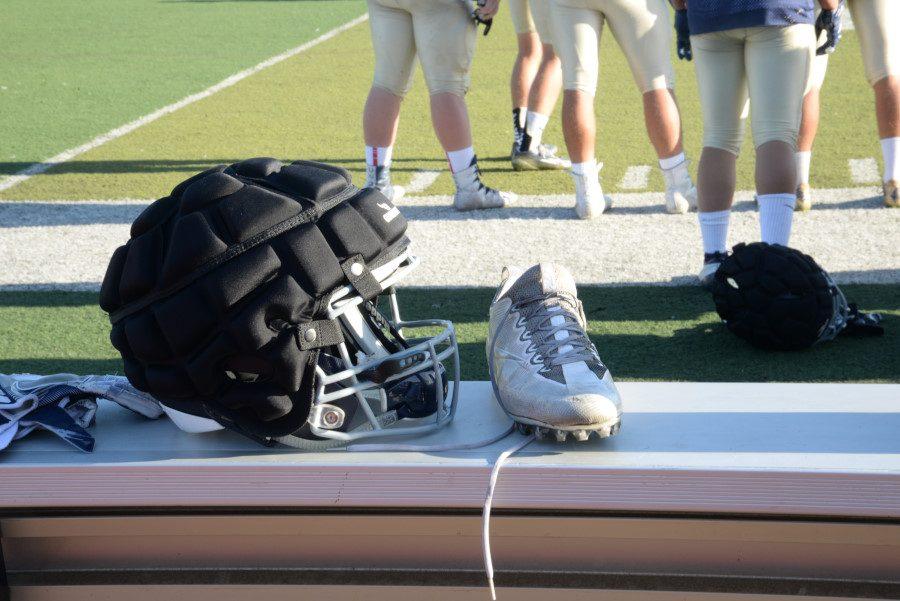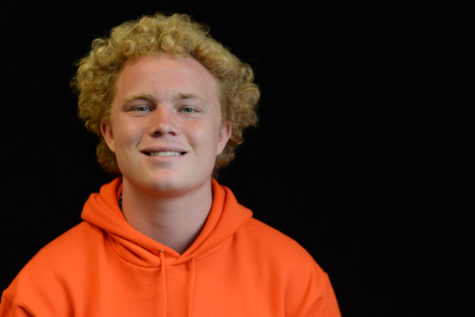Concussion Safety: It’s a Headache
The Guardian Cap, the technology put in place by SJHHS’s football program, will prove beneficial to the players’ safety and, hopefully, prevent concussions from occuring in the future.
October 7, 2016
In the past decade, there has been notable public outrage aimed towards the NFL’s concussion protocol, stemming from the multiple cases of former NFL players committing suicide due to their NFL careers causing CTE and brain trauma.
SJHHS has taken steps to imitate the NFL’s push towards a safer game by implementing a brand new piece of protective equipment called the Guardian Cap.
According to offensive line coach Charles Briggs, the Guardian Cap is designed to “absorb a lot of the blow from the initial contact.” They are currently mandatory to use in practice and optional to use in games.
Additionally, SJHHS football coaches are now teaching a new form of tackling in order to minimize the amount of concussions in game.
“When I was a kid, we would always put our helmet in front of the tackler,” Briggs said. “What Coach Gonzalez and Coach Flowers instituted was a back-shoulder tackle, like a rugby style tackle, and that’s to keep the head out of the collision.”
With these new techniques and equipment being integrated into the football program, it is clear that football is becoming safer than ever before. The same cannot be said, unfortunately, for most other sports, whose way of handling concussions falls far behind the times.
Considering that a key part of the sport is literally headbutting the ball out of midair, both girls and boys soccer have a surprisingly lax structure when it comes to dealing with athletes with potential concussions.
If a player is deemed to receive a head injury, the referee will look over the injured player and determine whether or not the player should be sent off to get treatment. However, more often than not, the player will get approval from the referee to play on with no more than a cursory look.
Members of the girls soccer team attempted to protect themselves from concussions but, according to Isabella Peloso, the helmets actually cause more harm than good.
“Girls get confident and go in full force but since [the concussion helmets] aren’t protective, the girls end up getting hurt. So not as many girls use them anymore,” Peloso said.
The United States Soccer Federation agrees with the sentiment expressed by Peloso, as leading member of US Soccer’s Medical Committee Dr. Margot Putukian said, “You don’t want players to have a false sense of security with a product that might not only not prevent concussion but might actually make things worse. And there’s some data that suggest that the acceleration forces that you see with headgear may be increased, especially in girls.”
In boys lacrosse, the brutality of the sport should contain few doubts that concussions are a legitimate problem in the sport. One junior on the boys lacrosse team, Preston Seemann, has first hand experience with the sport’s dangers.
Seemann, who received his concussion by getting hit in the back of the head during a lacrosse game, actually spoke about his team’s attention to detail when it came to his concussion, said, “They brought me off the field, they checked my eyesight, they checked my hearing, and [a doctor outside of the team] told me that I could not be physically active for two weeks.”
There is already a strong program to follow in terms of concussion safety with football, which has already taken steps to protect their athletes. As long as other sports can follow football’s footsteps, then SJHHS student-athletes can feel confident and ensured in their safety.


